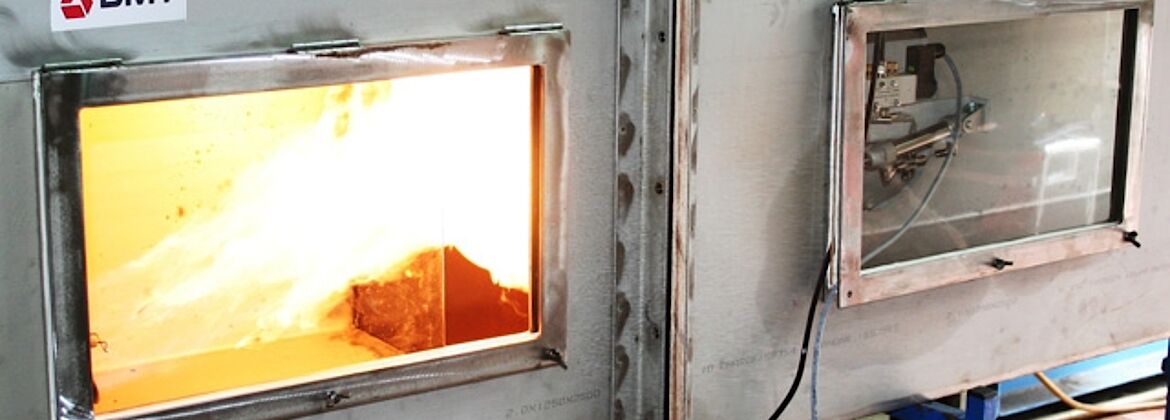Kitchen Ventilation Requirements
There are various regulations and recommendations concerning the ventilation of kitchens. In Germany these are based on legal workplace regulations (ArbStättV and ASR) and on the recommendations of the relevant Employers' Liability Insurance Association (Berufsgenossenschaft (BG)). The regulations are summarised as follows:
Workplace regulations and technical rules
The workplace regulations specify guidelines for working areas, including things such as the ventilation and temperature control and the minimum illumination of working areas. For specific regulations there are the more detailed so-called "technical rules for the workplace" (in Germany ASR), which contain more precise definitions and interpretations of indeterminate legal terms. The workplace regulations are valid throughout Germany.
"ASR 3.6 - ventilation" is fundamental in regulating the ventilation of commercial kitchens.
It illustrates in detail the air quality requirements (incl. moisture and heat) and the requirements that apply to free ventilation and air conditioning systems, e.g. that the air extracted from kitchens may not be re-used as supply air.
Contact
Johannes Schamberg
Tel +49 201 172-1304
Fax +49 201 172-1606
<link mail-link internen>aerosolabscheider@dmt.de
Rules for health and safety
The requirements for kitchen ventilation and extraction are defined more precisely in "GUV-R 111 - Rules for Health and Safety - Working in Commercial Kitchens", published by the German Association of Accident Insurers (2007). This specifies: An air conditioning system (supply and extracted air) is required in kitchens in order to maintain air quality and temperatures conducive to good health. Moreover, the following applies: An extraction system is required at all times if large amounts of grease fumes and vapours are to be expected, for example where fryers, braising pans, roasters, grills, kettles and similar devices are in use, and the design of such air conditioning systems must comply with the VDI Directive 2052 "Air Conditioning Systems in Kitchens".
For kitchen extractor hoods GUV-R 111 demands that: The volumetric flow rate of the extractor hood must be sufficient to enable rapid capture of steam and vapours.
In addition, the following regulations apply: Kitchen extractor hoods and vents must be fitted with highly effective aerosol separators (grease filters) in order to prevent the exhaust ducts and the fan from becoming laden with grease."
As well as a high level of capture efficiency (so far not further defined) the GUV-R 111 specifies that: Aerosol separators (grease filters) must be designed so that flame transmission to subsequent parts of the system is largely prevented. Mesh filters alone are not permitted as aerosol separators for fire protection reasons, due to their variable resistance, the permeability of UV radiation when using UV-systems and the fact that they are more difficult to keep clean. They may, however, be used in combination with an upstream aerosol trap (combination filter) .
Furthermore, the GUV-R 111 provides more information on hygiene and the installation and removal of aerosol separators as well as specifications for aerosol and grease treatment systems. As regards hygiene, it recommends that: kitchen extractor hoods and their components (e.g. aerosol separators) are checked daily for grease and dirt and cleaned if necessary. The cleaning carried out should be documented.
Occupational health and safety information (German ASI)
ASI 8.19/08 of the German Employers' Liability Insurance Association for Food and Restaurants gives occupational health and safety information on ventilation and extraction in commercial kitchens and, in particular, detailed information on hazardous substances in the kitchen. With regards to aerosol separators, the only recommendations specified more precisely than those in GUV-R 111 are: Aerosol traps in exhaust ventilation systems must be cleaned in accordance with the operational requirements, however, at least every 14 days. In case of a heavy build-up of grease, daily cleaning procedures may be necessary.
Unfortunately there is no further clarification as to what internal level of capture efficiency constitutes a "highly effective" aerosol separator. ASI 9.30 deals with fire protection in relation to fryers but does not mention the possible fire hazard caused by grease in exhaust ducts and how to reduce this risk through efficient aerosol separation.
As the title suggests, ASI 8.18 -07 "Guideline for the Hygienic Operation of Ventilation Systems in small Commercial Kitchens", focuses in more detail than ASI 8.19 on the "hygienic" treatment of supply air. An appropriately detailed ASI (German occupational health and safety guideline) on ventilation in commercial kitchens does not exist to date.

